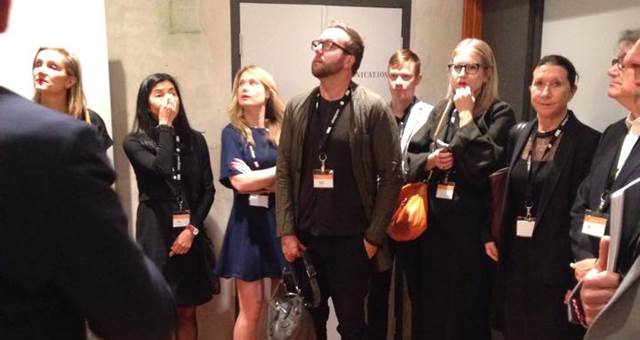
Read on for the key highlights of the day.
The fourth annual Design Inn conference, held at the Shangri-La Sydney on October 28, 2015, delivered a program full of predictions and positive market sentiment.
The headline news at the start of the day was that the company formerly known as ISIS has rebranded to become Shape.
Of the new name, Brett Patterson, National Executive Hotels for Shape said, “We’re all about shaping our industry and we’re builders so we build shapes. Shape makes sense for us.”
Gus Moors from Colliers International delivered a market overview, stating that Sydney is the best performing market in Australia with demand being driven by ‘benign supply’ and future demand being pushed along by the development of the International Convention Centre Sydney and Barangaroo. He also said that surprise markets for growth are Gold Coast and Cairns.
Following this, a panel convened to discuss development, especially the relationship between the management company and the owners of the property.
Dean Rzechta from Ninety Four Feet said, “You live and die by the operator,” a sentiment that was shared across the board.
Kingsley Amose from Accor said that missteps and successes in the areas of management and development are writ large on Tripadvisor. He also said that developers should start working with the management companies as soon as possible in the life cycle of the hotel.
Amose said, “Management companies have a wealth of knowledge on helping investors save money on their investment. It’s very important that an investor talks to an operator at the time they decide which brand they are going to run with.”
He said that with Accor brands, their team can help developers optimise space front and back of house, make the F&B spaces profitable, as well as spec the room sizes accordingly.
“In China, developers talk to us when they are buying the land so they can figure out which brands will fit on proposed sites,” said Amose.
Next up was Josef Seidler giving a detailed overview of the Echo Entertainment Group Queen’s Wharf project in Brisbane that is being dubbed an ‘integrated resort’. The audience were treated to a fly-through of the new development that will take over 7.8 ha of space, feature Dorsett, Rosewood and Ritz-Carlton Hotel brands, as well as Echo’s own Darling Hotel, have 50 restaurants and bars and will have its own bridge connecting it to the southern side of the Brisbane River.
Following this glimpse at the near future in Australia, a panel got together to talk about global trends in the development (see: Top five hotel design trends). In addition to discussions around mobility and ‘kitsch underwater’, the panellists also threw concepts out around hotels in space such as Marriott on Mars.
The ‘little guys’ from Little National in Canberra and Alex Hotel in Perth then presented on the ways they have applied original thought to the concept of what a hotel is. In the case of Little National, it’s a hotel on top of a car park, and in the case of the Alex Hotel, it’s all about applying the fundamentals of residential interior design to a hotel environment.
Alex Hotel founder Miles Hull said, “A hotel is part of a neighbourhood. We wanted to contextualise and celebrate the hotel as being part of the community.”
He also said that he deliberately ‘stripped out unnecessary elements that drive up the prices’ such as doormen, room service and art on the walls and gave guests a complimentary breakfast to encourage them to engage in the communal spaces of the hotel, and subsequently, the neighbourhood where it’s located.
Josh Fluhr from Morgans Hotel Group provided an update on its projects and a panel including Paul Wiste from Jumeirah Group and Loh Lik Peng from Unlisted Collection got together to chat about ‘Designing for the Neighbourhood’, a theme that ran through many of the sessions throughout the day.
Dr Jerry Schwartz hit the stage for a one-on-one with HM Editor James Wilkinson where he talked through the evolution of his involvement in the hotel ownership game. He also talked extensively about his plans for the new Sofitel at Darling Harbour including the fact that he has council approval to install a light show that was inspired by his travels around China.
Bruce Ramus’ presentation on The Theatre of Light was a creative highlight of the day. Ramus talked through and illustrated the ways that lighting systems can create ‘sky’ or ‘views’ using the live feed from cameras placed outside a building that are then projected onto recessed spaces in the building’s interiors.
Isaac Kim from Schneider shared the features of the companies’ new ‘one touch user interface’ room control centre that makes controlling lighting, air conditioning, WiFi, power, do not disturb messaging and multimedia systems easy for guests. The systems can be retrofitted into any hotel.
The day wrapped up with a ‘Quiz the Internationals’ panel where the future of the industry – in light of competition from AirBnb, Flipkey and Home Away – was discussed. The conclusion? Hotels will look and operate very differently in 30 years’ time. With 3D printers able to deal with concrete, the possibilities for printing bespoke rooms is there, as well as all the previously mentioned trends towards mobility, hotels in space and scaled down luxury properties.

